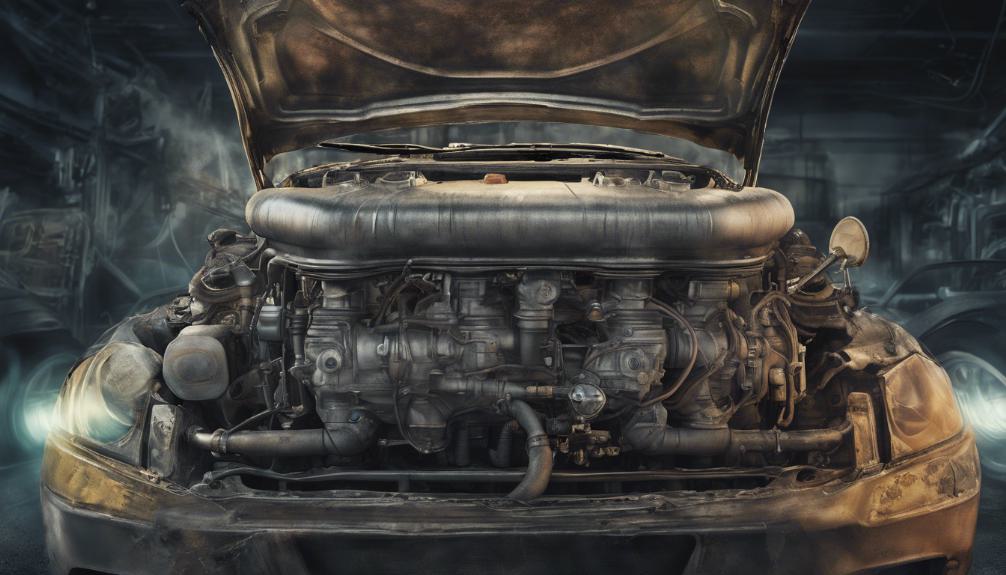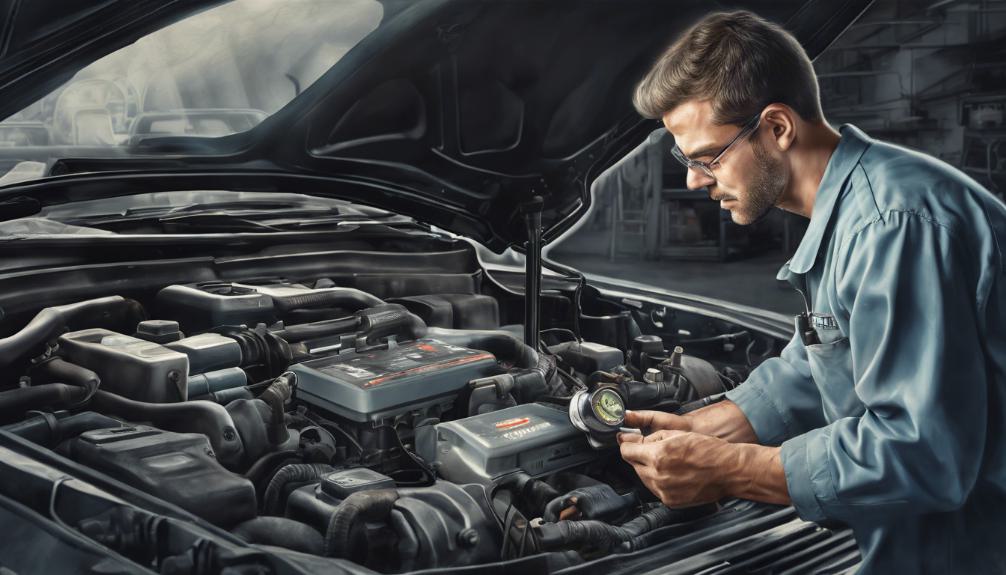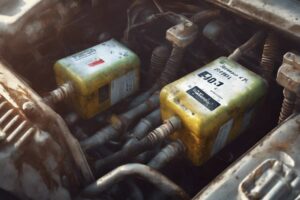If you’re dealing with a P2271 code due to rich O2 sensor signals, check for fuel pressure issues or wiring problems.
Symptoms include the Check Engine Light, poor fuel economy, and engine misfires. To diagnose, inspect the sensor, test it, and check harness connectors.
Repair by replacing the HO2S2 sensor and maintaining fuel system components. Prevent recurrence by regular inspections, following service intervals, and using quality fuel.
Understanding the causes, symptoms, diagnostics, repairs, and preventive measures are essential for resolving the issue effectively in your vehicle’s oxygen sensor circuit.
Key Points
- Inspect HO2S2 sensor for rich signals after catalytic converter on bank #1, sensor #2.
- Check for fuel pressure issues and maintain it within specified range.
- Address symptoms like poor fuel economy, engine misfires, and rough idling.
- Replace sensor if necessary and ensure proper maintenance of fuel system components.
- Prevent code recurrence by maintaining oxygen sensors, following service intervals, and using quality fuel.
Common Causes of P2271 Code

If you encounter the P2271 code, it typically signifies a rich air-fuel mixture detected by the O2 sensor located after the catalytic converter on bank #1, sensor #2.
Common causes of this code include issues with fuel pressure and wiring. Fuel pressure problems can lead to a rich mixture being supplied to the engine, triggering the P2271 code.
It’s important to make sure that the fuel pressure is within the manufacturer’s specified range to prevent this issue.
Then, wiring problems can disrupt the communication between the O2 sensor and the engine control module, resulting in inaccurate readings and the detection of a rich air-fuel mixture.
Properly inspecting the wiring harness for any signs of damage or corrosion is vital in addressing this cause of the P2271 code.
Symptoms of Rich O2 Sensor Signals
Experiencing rich O2 sensor signals can lead to various noticeable symptoms in your vehicle. A rich air-fuel mixture, indicated by rich O2 sensor signals, may trigger the Check Engine Light (CEL) to illuminate.
Poor fuel economy is often a consequence of this condition, affecting engine performance.
You might also encounter engine misfires or spark knock, causing rough idling. Hesitation during acceleration is another important indicator associated with rich O2 sensor signals.
These symptoms are vital signs that your vehicle’s fuel mixture may not be ideal, affecting both efficiency and engine performance.
Recognizing these signs early on can help you address the issue promptly and prevent further damage.
In the next section, we’ll explore the diagnostic steps necessary to tackle the P2271 code and rectify the rich O2 sensor signals causing these symptoms.
Diagnostic Steps for P2271 Code

To diagnose the P2271 trouble code effectively, begin by inspecting bank 1 sensor 2 for rich O2 sensor signals. Start by conducting sensor testing to determine if the O2 sensor is functioning correctly.
Use a digital multimeter to check the resistance of the harness connectors to confirm proper electrical connections.
Next, perform electrical troubleshooting by inspecting the wiring and connectors for any signs of damage or corrosion.
Also, examine the exhaust system for leaks or other issues that could be contributing to the rich air-fuel mixture.
Advanced scan tools can be utilized to monitor sensor readings and pinpoint the source of the problem more accurately.
If necessary, consider replacing the O2 sensor with an OEM part to resolve the P2271 trouble code effectively.
How Does the C1130 Code Relate to the P2271 Code in Terms of Engine Signal Issues?
When a car’s computer detects the C1130 code, it means there is a decoding engine signal 1 breakdown. This can lead to related issues, such as the P2271 code, which indicates a problem with the O2 sensor. Both codes are related to engine signal issues, which can affect the performance of the vehicle.
Repair Solutions for Rich O2 Signals
Consider replacing the HO2S2 sensor as a primary solution for addressing rich O2 sensor signals indicated by code P2271 in bank 1 sensor 2.
Sensor maintenance tips include ensuring proper installation, keeping sensors clean, and checking for any physical damage.
Regularly inspecting the fuel system is essential in preventing rich mixture conditions. Look for leaks, clogs, or fuel pressure irregularities that could lead to a rich O2 signal.
A thorough fuel system inspection involves checking the fuel filter, fuel injectors, and fuel pressure regulator for any issues that could affect the air-fuel mixture.
Addressing any fuel system problems promptly can help prevent further damage to the oxygen sensors.
Preventing P2271 Code Recurrence

To prevent the recurrence of the P2271 trouble code, focus on maintaining oxygen sensors and related wiring through regular inspections and addressing any symptoms of a rich mixture condition promptly.
Regular maintenance is key to avoiding rich O2 sensor signals.
Inspect fuel system components periodically to catch any issues early on.
Following the manufacturer’s recommended service intervals for O2 sensors and fuel system parts can help prevent P2271 trouble code problems.
Using quality fuel and additives to keep the fuel system clean is also essential in preventing rich O2 sensor signals and potential trouble codes.
By staying proactive with maintenance and promptly addressing any signs of a rich mixture condition, you can significantly reduce the chances of the P2271 trouble code reoccurring.
As an Amazon Associate we earn from qualifying purchases.










